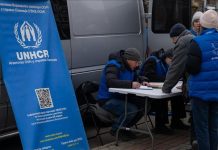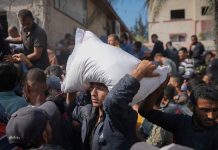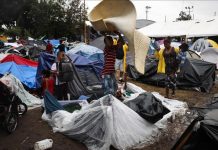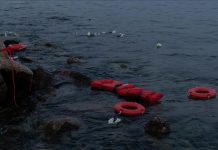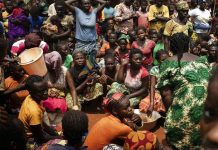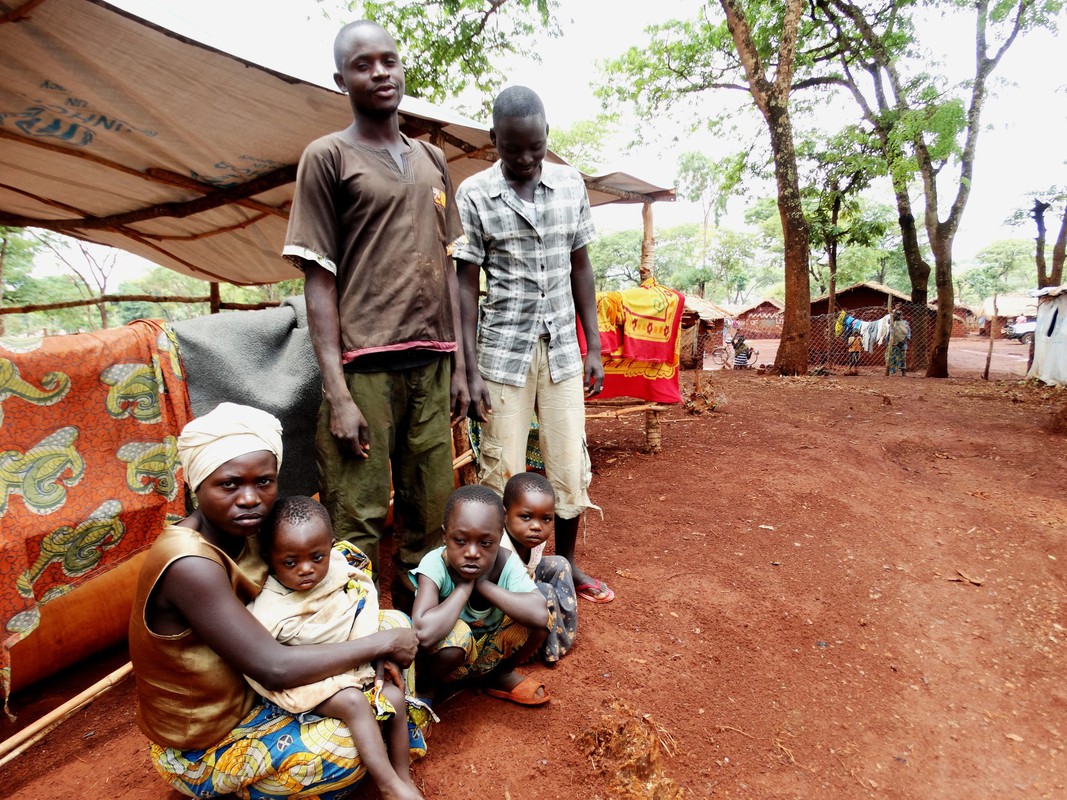
Minani*, a father, 27 years old, living in one of Nyarugusu refugee camp’s mass shelters
Minani reached Tanzania in July 2015, having escaped the political unrest in Burundi, where he witnessed his parents and his four youngest brothers being killed inside our house. After that he had to take his family (wife and three children) and run, to look for a place where they could live in peace. The rest of his family left him behind, as well as his younger brother who fled from Burundi in May 2015.
Minani says “Months later, I met his brother here in Nyarugusu, thanks be to God. My family and I arrived at the camp on 18th July by bus from the border. I was shocked to see him standing at the reception centre. He had come every day, looking for new arrivals in case he saw someone he knew. We are happy to live as refugees - here we have peace. Only the brothers in our family are still alive. I can’t go back to Burundi; they killed my parents and my other three brothers and left only the two of us.”
“We were in mass shelters for three months. The conditions there were not good. I lived separately from my wife, and the food we were given was not enough for the family. Peas [given to refugees living in the camp] always cause stomach problems for our children.”
“Different organisations have helped us here so we got enough clean water and latrines. We were also given hygiene kits by Oxfam, with buckets and soap, and we were also given clothes and received health care. At the mass shelter we had enough clean water, but its taste is bitter. We used it for cooking, washing and also saved some.”
*Names have been changed to protect identity
REFUGEE camps in Kigoma region have recorded high birth rate, casting worries that the situation, if not managed, may cause serious troubles in the future, including territorial disputes. Data indicate that over 600 babies are born every month in each camp in the region which hosts refugees from Burundi and the Democratic Republic of Congo.
Members of the CCM’s National Executive Committee (NEC) in Kigoma region expressed their worries over high birth rate and called for government’s swift intervention. They raised their concern during a one-day ordinary meeting which resolved that continuing with that trend would create major problems in the future, including some of the refugees to claim their territory within Tanzania.
Lawmaker for Kasulu Urban, Mr Daniel Nsanzugwako, said he hadvisited some of the camps in the region and learnt that the number of newborns stood at 600 per month, which was too high. “If only one camp records 600 newborns per month how if you take a total of all babies born in all camps in one year.
This is a big number that will bring effects in the coming days, unless strategies are put in place,” Mr Nsanzugwako argued. He opined that one of effects might be a big population of those children getting into streets and live like Tanzania’s citizens, which is not healthy to national security. He advised the government to ensure that the refugees are repatriated to their countries immediately or given citizenship under special conditions.
CCM’s Secretary for Kibondo District, Mr Stanley Mkandawile, pointed out that increased number of refugees who left the camps and went to live in the streets caused citizenship problems in the region particularly during elections, something which could enable some of the refugees get leadership positions. NEC Member, Mr Kirumbe Ng’enda, went as far as explaining over harassment that the residents of Kigoma encounter due to issues of citizenship following increased number of refugees in the streets.
On his part, CCM Kigoma Regional Chairman Amandus Nzamba stated that members of the NEC in Kigoma have resolved that the Government has to review the issue of addressing citizenship puzzle in the region and high birth rate in the refugee camps. According to the United Nations Higher Commissioner for Refugees, by October 31, 2018, Tanzania was host to 330,755 refugees and asylumseekers.
They were mainly from Burundi (245,964) and the Democratic Republic of the Congo (DRC) (84,170) from 15 different nationalities (621) and a small population of refugees of mixed nationalities (270) were hosted in urban centres, mainly in Dar es Salaam. The majority of refugees and asylum-seekers live in three refugee camps in north western Tanzania — Nyarugusu, Nduta and Mtendeli.
However, in August 2017, the Tripartite Commission Tanzania, Burundi and UNHCR agreed to implement a work plan from September 2017 entailing the voluntary repatriation plan of Burundian refugees who wished to return to the decades-long conflict hit tiny East African nation.
Available reports also indicate that the global refugees’ agency has facilitated the voluntary return of almost 75,000 refugees since September 2017, under a deal with Burundi and Tanzania.


